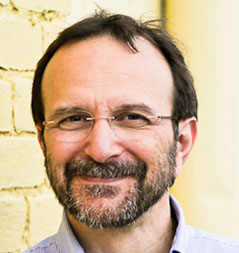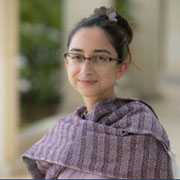Felicia joins TWiV to discuss her career and her research on human cytomegalovirus, which infects most of us for our entire lives yet mainly causes disease in the immunosuppressed.
In his weekly clinical update Dr. Griffin discusses the infectiousness of SARS-CoV-2 breakthrough infections and reinfections during the Omicron wave, virological characteristics of the SARS-CoV-2 XBB variant derived from recombination of two Omicron subvariants, antibody evasion properties of rising SARS-CoV-2 BQ and XBB subvariants, comparative effectiveness of third doses of mRNA-based COVID-19 vaccines in US veterans, time to negative PCR conversion among high-risk patients with mild-to-moderate Omicron BA.1 and BA.2 COVID-19 treated by Sotrovimab or Nirmatrelvir, COVID drug Paxlovid was hailed as a game-changer, what happened?, the Fc-effector function of COVID-19 convalescent plasma contributes to SARS-CoV-2 treatment efficacy in mice, SARS-CoV-2 infection and persistence in the human body and brain at autopsy, long-term cardiovascular outcomes of COVID-19, and how heart-disease risk soars after COVID — even with a mild case.
In the first epitope of 2023, TWiV reviews our coverage of virology in 2022, including favorite story arcs, episodes, show titles, and much more.
In his weekly clinical update Dr. Griffin discusses modelling the adjustment of COVID-19 response and exit from dynamic zero-COVID in China, canine real-time detection of SARS-CoV-2 infections in the context of a mass screening event, two masks can be worse than one: N95 respirator failure caused by an overlying face mask, airflow patterns in double-occupancy patient rooms may contribute to roommate-to-roommate transmission of severe SARS-CoV-2, clinical validation of a novel T-Cell receptor sequencing assay for identification of recent or prior SARS-CoV-2 infection, antibody-dependent cellular cytotoxicity against SARS-CoV-2 Omicron sub-lineages is reduced in convalescent sera, regardless of the infecting variant, VV116 versus Nirmatrelvir–Ritonavir for oral treatment of Covid-19, Nirmatrelvir plus Ritonavir for early COVID-19 in a U.S. health system, Molnupiravir plus usual care versus usual care alone as early treatment for adults with COVID-19 at increased risk of adverse outcomes, higher dose corticosteroids in hospitalized COVID-19 patients with hypoxia but not requiring ventilatory support, FDA approves Roche’s Actemra (tocilizumab) for the treatment of COVID-19 in hospitalized adults, structural brain changes in post-acute COVID-19 patients with persistent olfactory dysfunction, persistent post–COVID-19 smell loss is associated with immune cell infiltration and altered gene expression in olfactory epithelium, epidemiology of long COVID in US adults, persistent symptoms and sequelae after SARS-CoV-2 infection not requiring hospitalization, and outpatient treatment of Covid-19 with metformin, ivermectin, and fluvoxamine and the development of Long Covid over 10-month follow-up.
Carl Zimmer visits the Incubator to record a wide-ranging conversation about COVID-19, including origins, vaccines, public health responses, and impact on society.
TWiV reviews eukaryotic viruses recovered from ancient permafrost, a mistake made by scientists on Omicron origins, and close relatives of MERS-CoV from bats that bind ACE2 for entry into cells.
In his weekly clinical update Dr. Griffin discusses how immunological dysfunction persists for 8 months following initial mild-to-moderate SARS-CoV-2 infection, prevalence of SARS-CoV-2 and influenza coinfection and clinical characteristics among children and adolescents aged <18 years who were hospitalized or died with Influenza, WHO estimates of excess mortality associated with the COVID-19 pandemic, reconsideration of anti-nucleocapsid IgG antibody as a marker of SARS-CoV-2 infection post-vaccination for mild COVID-19 patients, impact of SARS-CoV-2 variants on inpatient clinical outcome, clinical features and burden of post-acute sequelae of SARS-CoV-2 infection in children and adolescents, similar SARS-CoV-2 Ct value distributions in anterior nares versus nasopharyngeal samples from symptomatic children during Delta and Omicron surges, early estimates of bivalent mRNA vaccine effectiveness in preventing COVID-19, effect of Nirmatrelvir/Ritonavir vs Placebo on COVID-19─related hospitalizations and other medical visits, COVID-19 Convalescent Plasma outpatient therapy to prevent outpatient hospitalization, bacterial co-infection and empirical antibiotic therapy in patients with COVID-19, association of time to surgery after COVID-19 infection with risk of postoperative cardiovascular morbidity, demonstration of stable clusters of symptoms in long COVID, and how longitudinal analysis of t cells in COVID-19 survivors with post-acute sequelae of COVID-19 reveals associations between individual symptoms and inflammatory indexes.
Vincent travels to the NIH campus to speak with Jeffery Taubenberger about his career, the 1918 influenza pandemic, deciphering the genome sequence of the virus from tissues of disease victims and using it to rescue infectious virus.
Brazilian infectious diseases physician Esper Kallas returns to TWiV to discuss the state of viral diseases in his country, including those caused by Zika, dengue, and yellow fever viruses, MPOX, and SARS-CoV-2.
Vincent travels to Cornell University to speak with Gary Whittaker about regulation by proteolytic processing of the fusion activity of the spike protein of SARS-CoV-2, and feline coronavirus transmission, replication and disease.








